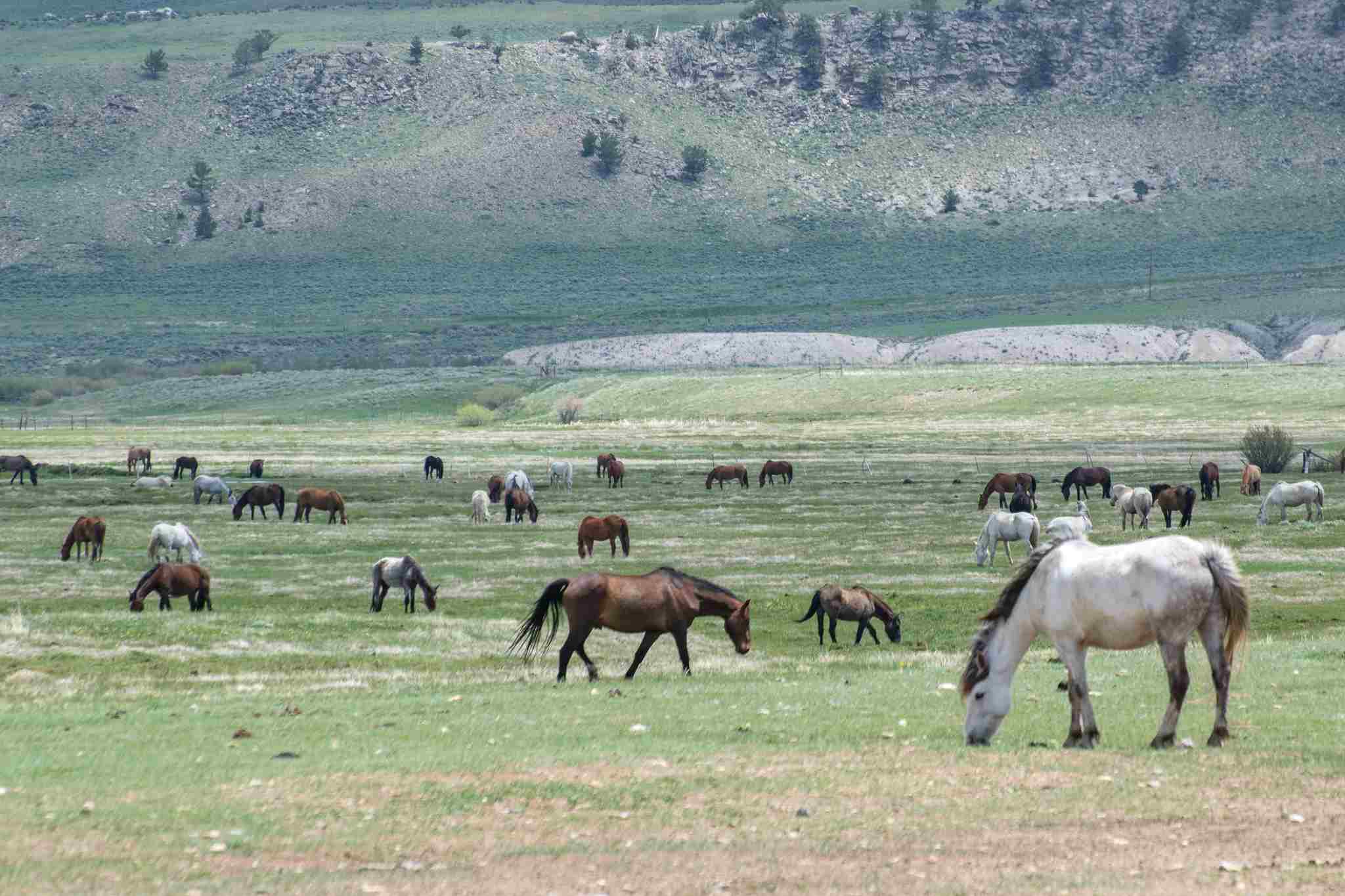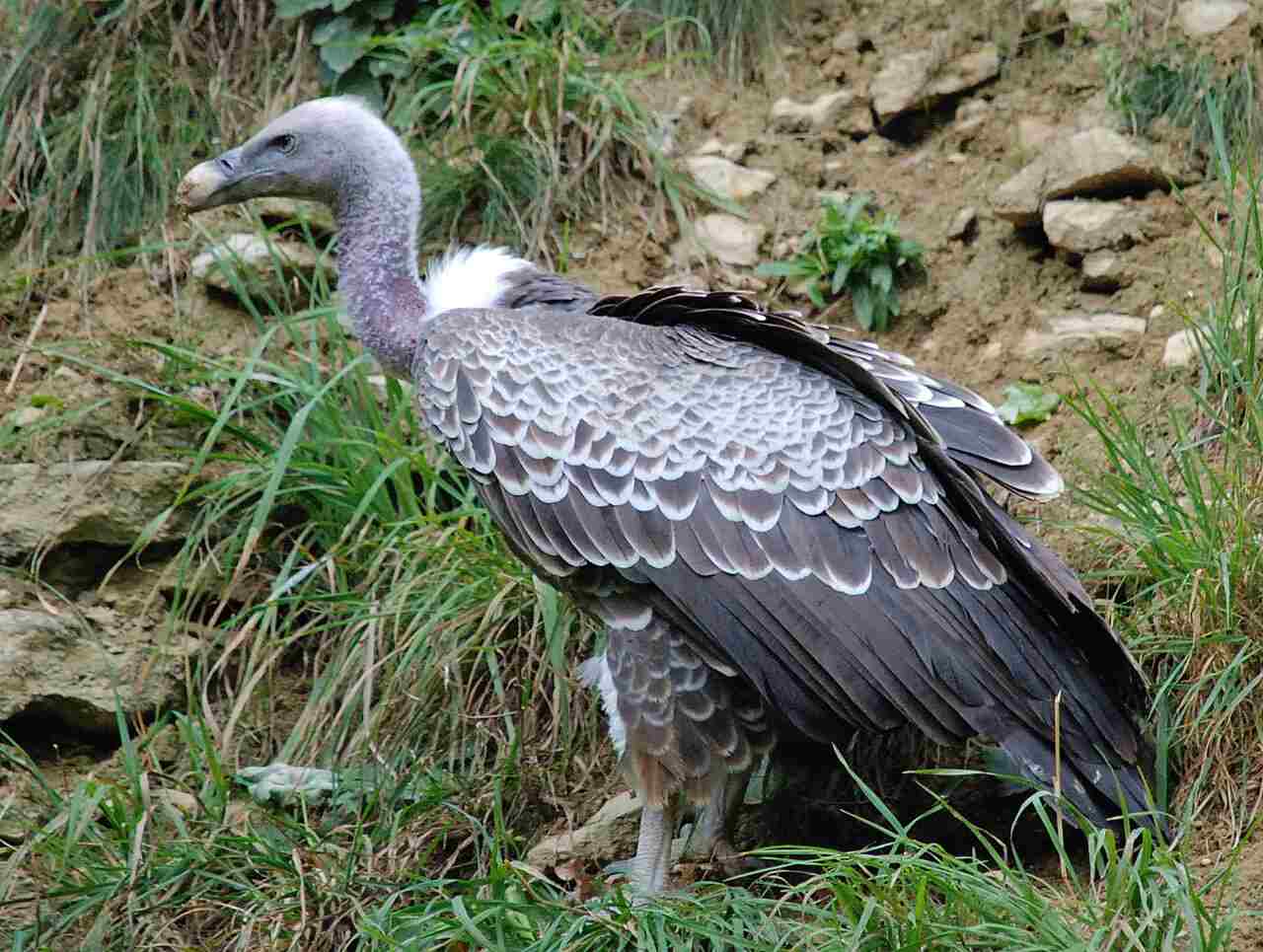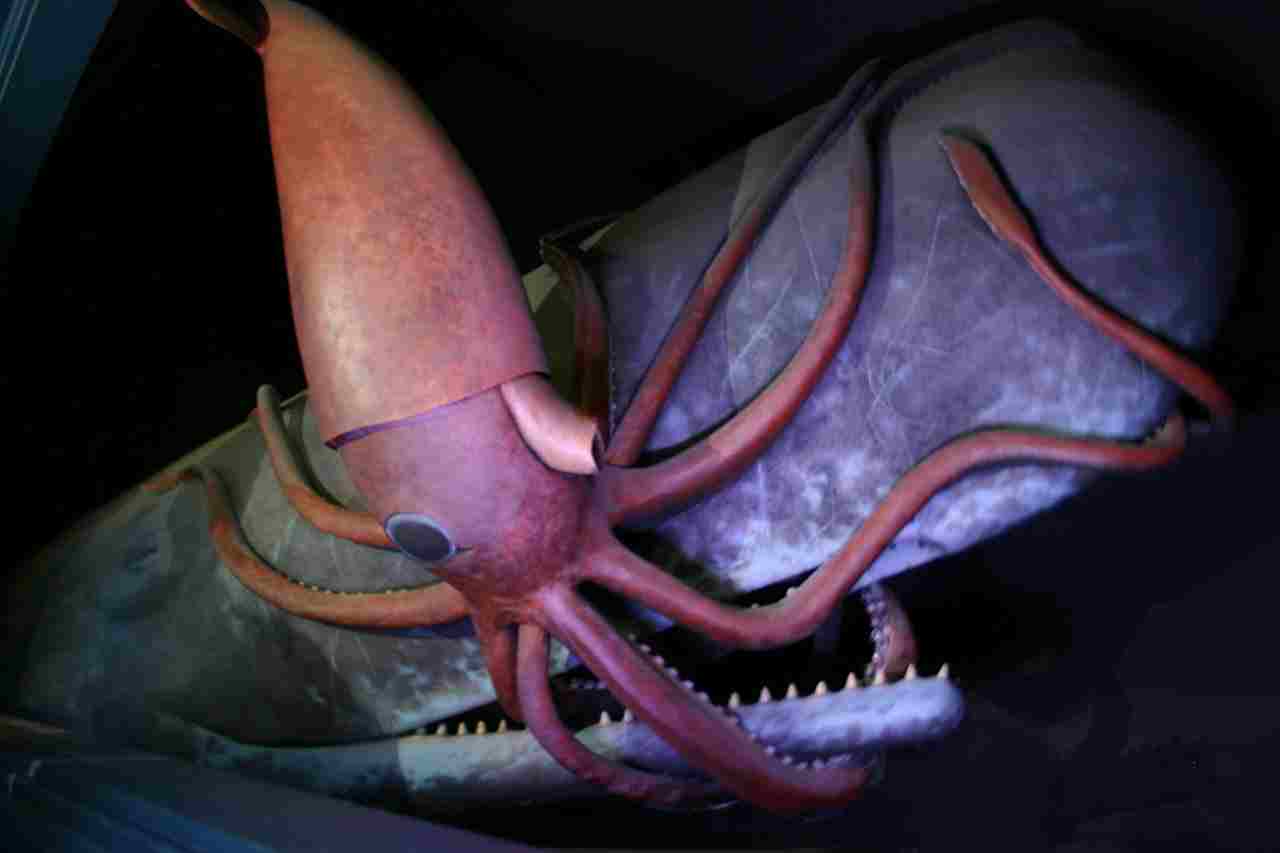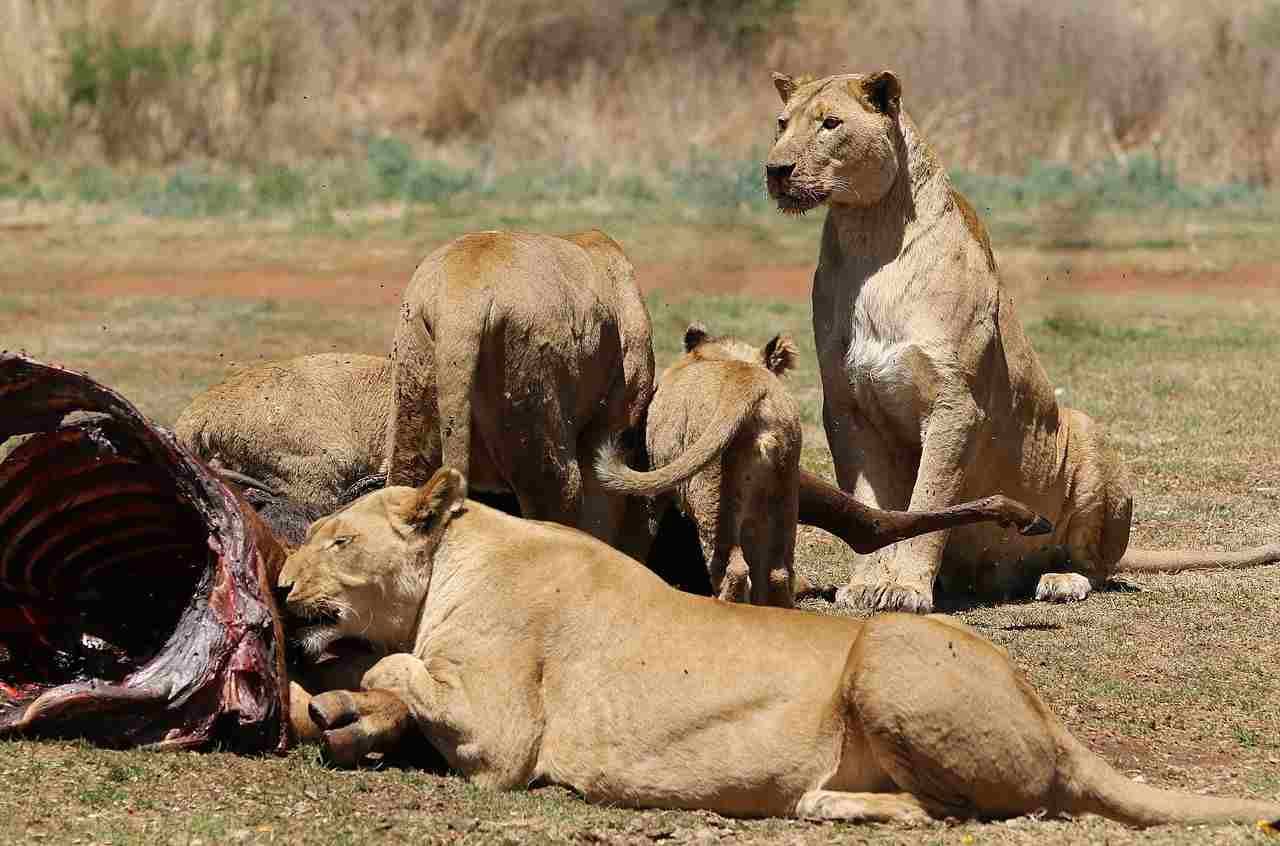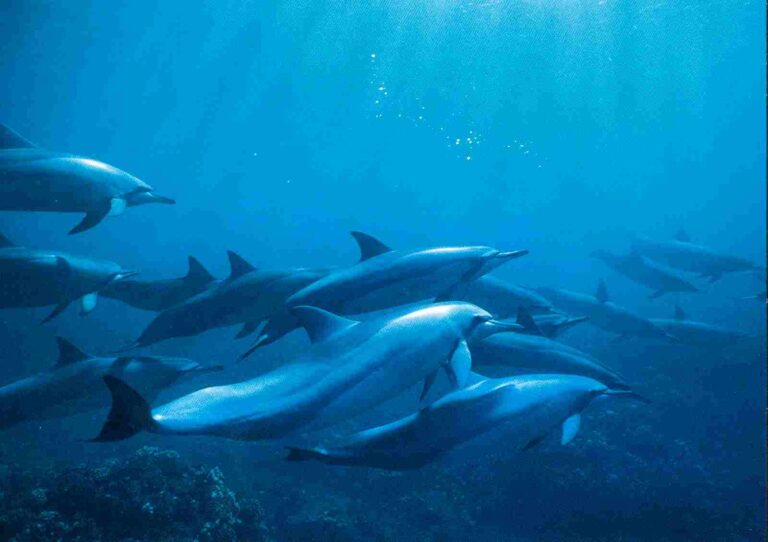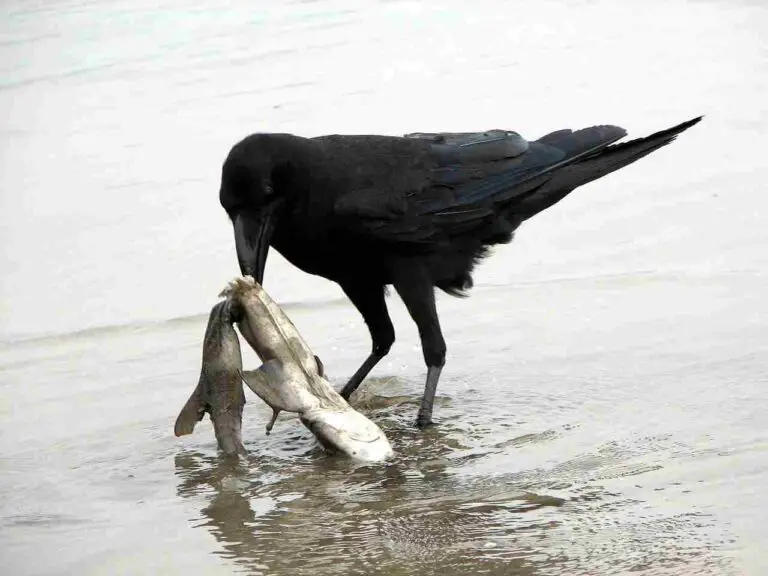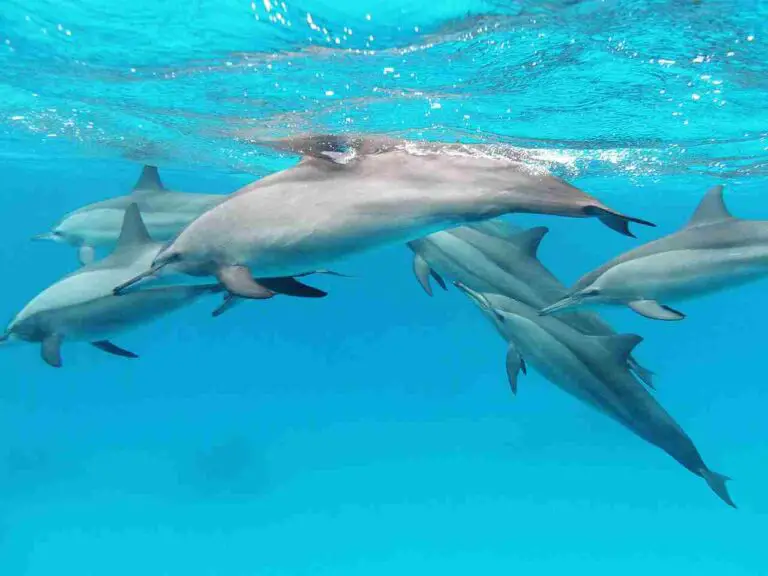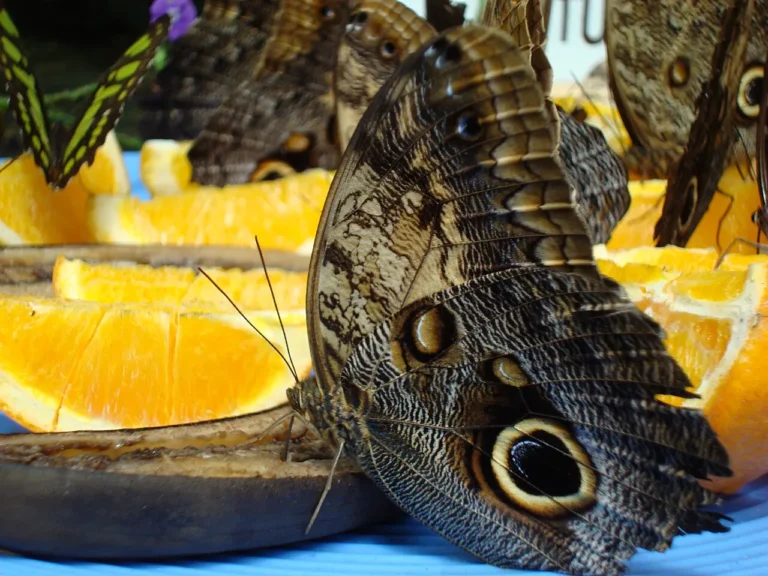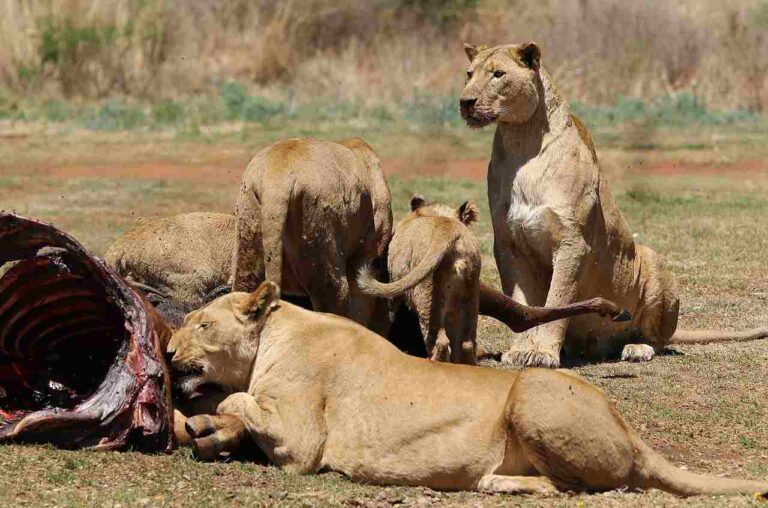Is a Hawk a Carnivore? Exploring Hawk Feeding Preferences
A hawk is a carnivore because it derived nutrients and energy from animal biomass, and does not feed on producers like algae, vascular and non vascular plants.
Reasons Why a Hawk is Classified as a Carnivore
1. They Do Not Feed On Producers
Hawks are classified as carnivores for several reasons. One of the main reasons is that they do not feed on producers. Unlike herbivores, which primarily consume plants and other producers, hawks rely on a diet consisting mainly of other animals. This distinction in feeding preferences is a key factor in classifying hawks as carnivores.
Hawks are known for their predatory nature, hunting and capturing prey to sustain themselves. Their diet primarily consists of small mammals, birds, reptiles, and even insects. By preying on these animals, hawks obtain the necessary nutrients and energy they need to survive. This reliance on animal-based food sources further solidifies their classification as carnivores.
The physiological and behavioral adaptations of hawks also support their classification as carnivores. Hawks possess sharp, curved beaks and strong talons, which are well-suited for capturing and killing their prey. Their keen eyesight and exceptional flying abilities enable them to spot and pursue their targets with precision. These adaptations are specifically designed for hunting and consuming other animals, reinforcing their carnivorous nature.
In addition to their physical attributes, hawks also exhibit specific behaviors that align with their classification as carnivores. They engage in aerial hunting, soaring high above their prey before diving down to make a swift and accurate attack. Hawks also display territorial behavior, defending their hunting grounds and nesting sites from other predators. These behaviors are characteristic of carnivorous animals, further supporting the classification of hawks as carnivores.
2. Primary Consumers are a Major Part of Hawks’ Diet
Hawks have a diverse diet that includes various primary consumers, such as voles, rabbits, and mice. These small mammals are herbivores, which means that they primarily feed on plants. By preying on these primary consumers, hawks position themselves as secondary or tertiary consumers in the food chain, solidifying their classification as carnivores.
As secondary consumers, hawks play a crucial role in maintaining the balance of ecosystems. They regulate the population of primary consumers, preventing them from overpopulating and causing damage to their habitats. By controlling the population of herbivores, hawks indirectly contribute to the health and sustainability of plant communities.
The inclusion of primary consumers in the hawks’ diet is a significant reason why they are classified as carnivores. While herbivores rely on plants for their energy and nutrients, hawks obtain these essential resources by consuming the herbivores themselves. This dietary preference for animal-based food sources further supports the carnivorous nature of hawks.
Hawks’ ability to capture and consume primary consumers is facilitated by their physiological and behavioral adaptations. Their sharp, curved beaks and strong talons are perfectly suited for capturing and killing their prey. These physical attributes, combined with their exceptional eyesight and flying abilities, enable hawks to spot and pursue their targets with precision.
In addition to their physical adaptations, hawks also exhibit specific behaviors that align with their classification as carnivores. They engage in aerial hunting, soaring high above their prey before diving down to make a swift and accurate attack. This hunting strategy allows them to effectively capture and consume primary consumers.
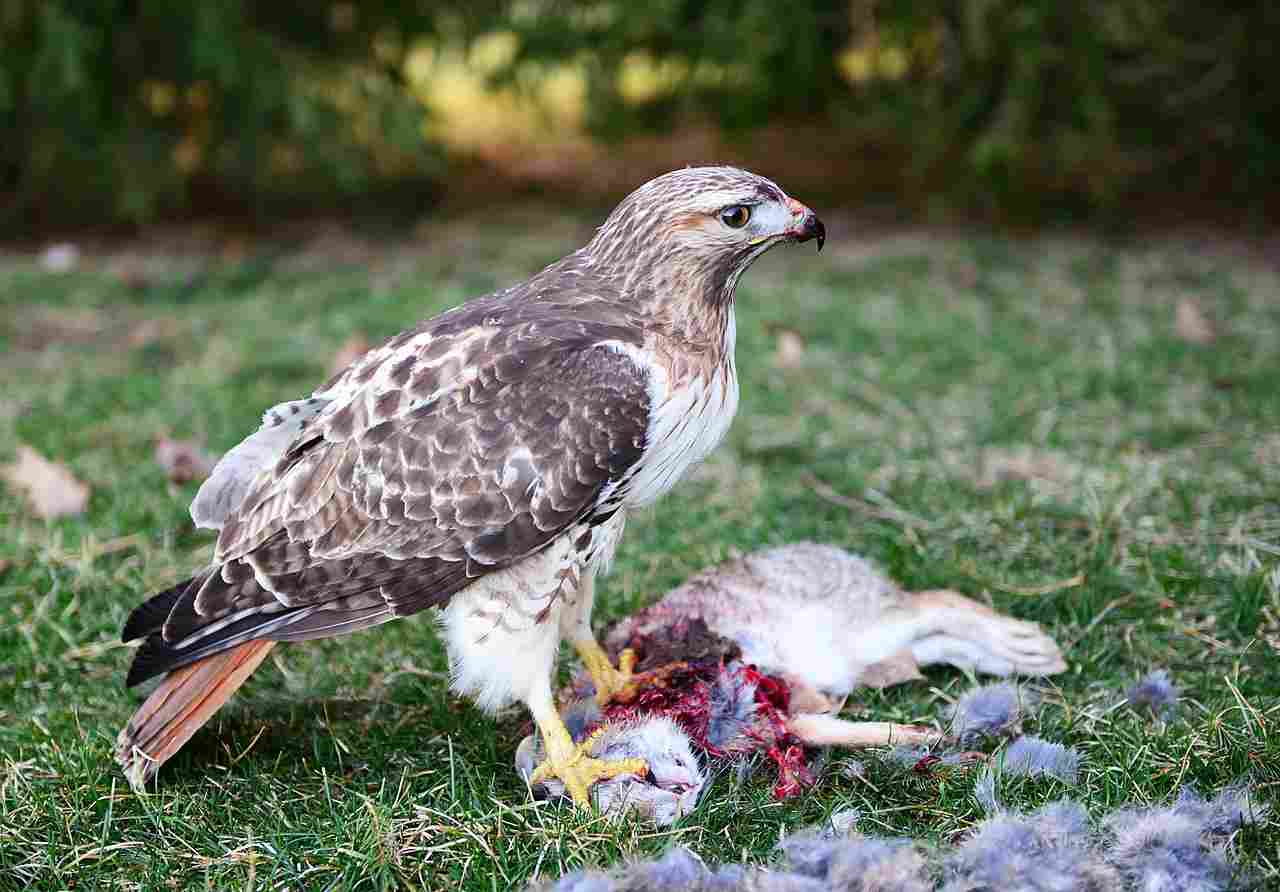
3. Physiological and Behavioral Adaptations
Hawks possess a range of physiological and behavioral adaptations that contribute to their classification as carnivores. These adaptations include their beak, talons, predatory behavior, and digestive system.
The beak of a hawk is a crucial tool for capturing and consuming prey. It is sharp and curved, allowing the hawk to tear into the flesh of its victims. The shape of the beak enables hawks to efficiently kill their prey and extract the necessary nutrients from their bodies. This specialized beak structure is a key adaptation that supports their carnivorous diet.
In addition to their beak, hawks have powerful talons that aid in capturing and holding onto their prey. These sharp and strong talons allow hawks to grasp their victims firmly, preventing them from escaping. The talons are essential for the hawk’s hunting success, as they provide the necessary grip and control during the capture and consumption process.
Predatory behavior is another significant adaptation exhibited by hawks. They engage in aerial hunting, using their exceptional eyesight to spot potential prey from high above. Once a target is identified, hawks employ their flying abilities to swiftly dive down and make an accurate attack. This hunting strategy, combined with their agility in flight, ensures that hawks are effective predators in their ecosystems.
Furthermore, hawks possess a digestive system that is well-suited for processing animal-based food sources. Their digestive tract is designed to break down and absorb the nutrients found in the flesh of their prey. This specialized digestive system allows hawks to extract the energy and essential nutrients they need to thrive.
The combination of these physiological and behavioral adaptations provides a compelling reason why hawks are classified as carnivores. Their beak and talons enable them to capture and kill prey, while their predatory behavior and digestive system support their consumption of animal-based food sources. These adaptations have evolved over time to ensure that hawks are efficient hunters and can meet their nutritional requirements through a carnivorous diet.
Are Hawks Omnivores?
Typically, hawks are not considered omnivores. Unlike animals such as crows, raccoons, and foxes, hawks are not as flexible or versatile when it comes to their food sources. Hawks have a more specialized diet that primarily consists of animal flesh.
Hawks are known for preying on herbivores like rabbits, as well as smaller or vulnerable carnivores like frogs and snakes. Their hunting strategy involves using their exceptional eyesight to spot potential prey from high above, and then swiftly diving down to make an accurate attack. This predatory behavior, combined with their agility in flight, makes hawks effective hunters in their ecosystems.
In terms of their feeding preferences, hawks do not rely on producers of any kind, including algae, vascular plants, and mosses. Instead, they obtain their nutrients from consuming the flesh of other animals. This is a key characteristic of carnivores, as they depend on animal-based food sources to meet their nutritional requirements.
Hawks possess a range of physiological and behavioral adaptations that support their classification as carnivores. Their beak, for example, is sharp and curved, allowing them to tear into the flesh of their prey. This specialized beak structure enables hawks to efficiently kill their prey and extract the necessary nutrients from their bodies.
Additionally, hawks have powerful talons that aid in capturing and holding onto their prey. These sharp and strong talons provide the necessary grip and control during the capture and consumption process. Combined with their predatory behavior and exceptional flying abilities, hawks are well-equipped to secure their food sources.
Furthermore, hawks possess a digestive system that is specifically designed to process animal-based food sources. Their digestive tract is adapted to break down and absorb the nutrients found in the flesh of their prey. This specialized digestive system allows hawks to extract the energy and essential nutrients they need to thrive.
Is a Hawk a Herbivore?
No, a hawk is not a herbivore. Unlike animals that rely on plants for their nutrition, hawks do not feed on producers of any kind, including algae, vascular plants, and mosses. Instead, hawks are classified as carnivores because they primarily feed on animal flesh.
Hawks are known for their hunting prowess, and their diet often consists of herbivores such as rabbits. These small mammals provide a substantial source of food for hawks due to their abundance in many ecosystems. Additionally, hawks also prey on smaller or vulnerable carnivores like frogs and snakes. This diverse diet allows hawks to adapt to different environments and ensure a steady supply of food.
The hunting strategy of hawks is a testament to their carnivorous nature. With their exceptional eyesight, hawks can spot potential prey from high above. Once they have identified their target, hawks swiftly dive down to make an accurate attack. This predatory behavior, combined with their agility in flight, makes hawks effective hunters in their ecosystems.
Physiological and behavioral adaptations further support the classification of hawks as carnivores. Hawks have a sharp and curved beak, which allows them to tear into the flesh of their prey. This specialized beak structure enables hawks to efficiently kill their prey and extract the necessary nutrients from their bodies.
In addition to their beak, hawks possess powerful talons that aid in capturing and holding onto their prey. These sharp and strong talons provide the necessary grip and control during the capture and consumption process. Combined with their predatory behavior and exceptional flying abilities, hawks are well-equipped to secure their food sources.
Furthermore, hawks have a digestive system that is specifically designed to process animal-based food sources. Their digestive tract is adapted to break down and absorb the nutrients found in the flesh of their prey. This specialized digestive system allows hawks to extract the energy and essential nutrients they need to thrive.
Is a Red Tailed Hawk a Carnivore?
Yes, a Red Tailed Hawk is indeed a carnivore, just like other hawk species. These majestic birds of prey have a diet that primarily consists of animal flesh. They are skilled hunters and have a diverse range of prey that they feed on.
One of the main food sources for Red Tailed Hawks is small mammals such as rats and rabbits. These creatures provide a substantial source of nutrition for the hawks due to their abundance in many ecosystems. Red Tailed Hawks are known for their impressive hunting prowess, using their exceptional eyesight to spot their prey from high above. Once they have identified their target, they swiftly dive down to make an accurate attack, capturing their prey with their sharp talons.
In addition to small mammals, Red Tailed Hawks also prey on other animals such as snakes, lizards, and toads. These reptiles and amphibians make up a significant part of their diet. Furthermore, Red Tailed Hawks are opportunistic hunters and will also target other birds like pigeons and ducks when the opportunity arises.
The Red Tailed Hawk’s diet reflects its carnivorous nature and its ability to adapt to different environments. These birds have evolved to be efficient hunters, with sharp and curved beaks that allow them to tear into the flesh of their prey. Their powerful talons provide the necessary grip and control during the capture and consumption process.
The digestive system of Red Tailed Hawks is specifically designed to process animal-based food sources. Their digestive tract is adapted to break down and absorb the nutrients found in the flesh of their prey. This specialized digestive system enables Red Tailed Hawks to extract the energy and essential nutrients they need to thrive.
Is a Hawk a Carnivore, Herbivore or Omnivore?
Hawks are classified as carnivores due to their feeding preferences. They primarily consume animal flesh, making them well-suited for hunting and capturing prey. Hawks are not herbivores because they do not feed on plants or other producers. Their diet consists mainly of small mammals, reptiles, amphibians, and other birds. This indicates that they are not omnivores either, as they are not as opportunistic or versatile in terms of their dietary range.
Hawks have physiological and behavioral adaptations that support their carnivorous nature. Their sharp and curved beaks allow them to tear into the flesh of their prey, while their powerful talons provide the necessary grip and control during capture. These adaptations enable hawks to efficiently consume and digest animal-based food sources.
FAQs
1. Is a Hawk a Carnivore, Herbivore, or Omnivore?
When it comes to the diet of a hawk, it is clear that it falls into the category of a carnivore. Hawks are carnivorous birds of prey, known for their sharp beaks and talons that are perfectly adapted for hunting and capturing other animals. They primarily feed on small mammals, such as mice, voles, and rabbits, but they are also known to eat birds, reptiles, and even insects.
Hawks have a keen sense of sight, allowing them to spot their prey from high above in the sky. Once they have located their target, they swoop down with incredible speed and precision to catch it. Their strong beaks and talons enable them to tear apart the flesh of their prey and consume it.
Unlike herbivores, hawks do not consume plant matter as a significant part of their diet. They lack the specialized digestive system required to break down and extract nutrients from plant material. Instead, their digestive system is designed to efficiently process and extract nutrients from animal tissue.
As for being an omnivore, hawks do not exhibit the behavior of consuming both plant and animal matter. Their diet consists solely of other animals, making them exclusively carnivorous.
2. What Class of Animal is a Hawk?
Hawks belong to the class Aves, which includes all birds. Within the class Aves, hawks are classified under the order Falconiformes and the family Accipitridae. These classifications help to categorize hawks based on their physical characteristics, behavior, and evolutionary relationships.
The order Falconiformes consists of diurnal birds of prey, which means they are active during the day and rely on their keen eyesight to hunt. This order includes other birds of prey such as eagles, falcons, and vultures. Hawks are known for their sharp beaks, powerful talons, and strong wings, which enable them to be efficient hunters.
Within the family Accipitridae, hawks are further classified into various genera and species. Each species of hawk has its own unique characteristics and adaptations that allow it to thrive in different habitats and prey on specific types of animals.
Hawks are highly specialized birds that have evolved to be skilled predators. Their classification within the class Aves, order Falconiformes, and family Accipitridae highlights their close relationship to other birds of prey and their distinct place within the animal kingdom.
3. Is a Hawk a Carnivore or Omnivore?
Hawks are classified as carnivores, meaning they primarily feed on meat. Unlike omnivores, which have a more varied diet that includes both plants and animals, hawks are highly specialized hunters that rely solely on consuming other animals for sustenance.
With their sharp beaks and powerful talons, hawks are well-equipped to capture and kill their prey. They primarily target small mammals such as rodents, including rats and mice, which are readily available in both urban and natural environments. Hawks are also known to prey on birds, both domestic and wild, making them a formidable predator in the avian world.
In the wild, hawks may expand their diet to include reptiles and amphibians, such as snakes and frogs. However, their main source of nutrition still comes from consuming other animals. This specialization as carnivores allows hawks to maintain their predatory skills and adapt to various habitats.
It is important to note that hawks are not considered omnivores because they are not highly opportunistic in their feeding habits. Unlike some other bird species that may supplement their diet with fruits, seeds, or insects, hawks rely solely on meat as their primary source of energy.
4. What do Hawks Eat in the City?
Hawks in the city primarily feed on rodents like rats and mice because they are the most readily available prey. With their keen eyesight and agile flight, hawks are skilled hunters that can easily spot and capture these small mammals. Their sharp beaks and powerful talons allow them to efficiently kill and consume their prey.
In addition to rodents, hawks in urban environments may also capture and prey on birds, both domestic and wild. Birds provide another source of food for hawks, and their abundance in cities makes them an attractive target. Hawks are known for their aerial hunting skills, swooping down from above to catch unsuspecting birds in mid-flight.
While the city may not offer the same variety of prey as natural habitats, hawks can still find a diverse range of food sources. In the wild, hawks expand their diet to include reptiles and amphibians such as snakes and frogs. These creatures provide an additional source of nutrition for hawks, allowing them to adapt to different environments.
5. What Does a Hawk Eat?
Hawks are predatory birds that primarily feed on lower and physically smaller consumers in the trophic hierarchy. This includes a variety of prey such as rodents and birds. Rodents, like rats and mice, are common targets for hawks due to their abundance and accessibility. Hawks use their exceptional eyesight and agile flight to spot and capture these small mammals with ease. Their sharp beaks and powerful talons allow them to efficiently kill and consume their prey.
In addition to rodents, hawks also prey on birds. They are skilled aerial hunters, swooping down from above to catch unsuspecting birds in mid-flight. This includes both domestic and wild birds, as they provide another source of food for hawks. The abundance of birds in cities makes them an attractive target for hawks residing in urban environments.
Hawks have a diverse diet and can adapt to different environments. In the wild, they expand their menu to include secondary consumers such as frogs, snakes, and lizards. These reptiles and amphibians offer an additional source of nutrition for hawks. By incorporating a variety of prey into their diet, hawks can maintain a balanced and nutritious meal plan.
6. What Eats Hawks?
Hawks, with their impressive hunting skills and powerful talons, are formidable predators in the animal kingdom. However, they are not invincible and can fall prey to certain predators themselves. While it is not very common for hawks to be preyed upon, there are a few species that pose a threat to them.
One of the main predators of hawks is the eagle. Eagles are larger and more powerful birds of prey that can overpower hawks in certain situations. They have sharp beaks and strong talons, making them capable of taking down hawks and feeding on them.
Larger hawks can also pose a threat to smaller hawk species. In the bird world, the principle of “survival of the fittest” applies, and larger hawks may prey upon smaller hawk species if they are in competition for resources or territory.
Certain owl species are also known to prey on hawks. Owls are nocturnal hunters with excellent night vision and silent flight. They can surprise hawks and catch them off guard, making them vulnerable to owl attacks.
Snakes, particularly larger species, can also be a threat to hawks. Snakes are skilled predators and can strike quickly, coiling around a hawk and constricting it. This makes hawks susceptible to snake attacks, especially when they are on the ground or perched in low trees.
Lastly, foxes, though very rarely, have been observed preying on hawks in some instances. Foxes are opportunistic predators and will take advantage of any available food source. If a fox comes across a weakened or injured hawk, it may seize the opportunity to capture and consume it.
7. Is a Hawk a Top Carnivore?
Hawks can be considered top carnivores in many cases. They have the ability to feed on secondary consumers such as snakes and lizards, which places them high in the food chain. However, their position as top carnivores can be displaced in areas where there is a significant presence and activity of larger raptors and terrestrial predators.
Hawks are skilled hunters and have adapted to be efficient predators. They have sharp beaks and powerful talons that enable them to catch and kill their prey. Their diet primarily consists of small mammals, birds, reptiles, and insects. By preying on these animals, hawks play a crucial role in controlling their populations and maintaining the balance of the ecosystem.
In some habitats, hawks may face competition from larger raptors such as eagles. Eagles are formidable predators that can overpower hawks and feed on them. When eagles are present, they can displace hawks from their position as top carnivores. Similarly, terrestrial predators like foxes and larger hawks can also pose a threat to the status of hawks as top carnivores.
It’s important to note that the position of a hawk as a top carnivore can vary depending on the specific ecosystem and the presence of other predators. In areas where hawks are the dominant predators and have minimal competition, they can be considered top carnivores. However, in environments with a diverse range of predators, hawks may have to share their position as top carnivores or even be displaced from it.
8. Are Hawks Heterotrophs?
Hawks are indeed heterotrophs. As heterotrophs, they are unable to produce their own food and rely on consuming other organisms for their energy and nutrients. This makes them dependent on external food sources to survive and thrive in their environment.
Unlike autotrophs, such as plants, which can produce their own food through photosynthesis, hawks are unable to convert sunlight into energy. Instead, they must obtain their energy by consuming other living organisms. Hawks are classified as carnivores, meaning they primarily feed on other animals. Their diet consists mainly of small mammals, birds, reptiles, and insects.
Hawks have evolved to be efficient predators, equipped with sharp beaks and powerful talons that enable them to catch and kill their prey. They use their keen eyesight and exceptional hunting skills to locate and capture their food. By preying on other animals, hawks play a vital role in maintaining the balance of the ecosystem by controlling the populations of their prey species.
9. Is a Hawk a Producer, Consumer, or Decomposer?
A hawk is primarily a consumer. Unlike producers, such as plants, hawks do not have the ability to manufacture their own food through photosynthesis. Instead, they rely on consuming other organisms for their energy and nutrients. Hawks are classified as heterotrophs, which means they obtain their energy by feeding on other living organisms.
As consumers, hawks play a crucial role in the food chain. They are at the top of the food chain and are considered apex predators. Their diet consists mainly of small mammals, birds, reptiles, and insects. Hawks have evolved to be efficient predators, equipped with sharp beaks and powerful talons that enable them to catch and kill their prey.
On the other hand, hawks are not producers or decomposers. They do not have the ability to produce their own food like plants, nor do they facilitate the biodegradation process like decomposers. Hawks rely on the energy and nutrients obtained from consuming other organisms to survive and thrive in their environment.
10. Is A Hawk A Predator or a Prey?
A hawk is primarily a predator in its habitat, although it may fall prey to other predators under some circumstances.
With their keen eyesight, powerful wings, and sharp talons, hawks are well-equipped to hunt and capture their prey. They are skilled hunters that can swoop down from the sky with incredible speed and accuracy to catch their target. Hawks mainly feed on small mammals, birds, reptiles, and insects, making them top predators in their ecosystem.
However, despite being predators, hawks can also become prey to other larger raptors. While hawks are formidable hunters, there are other birds of prey, such as eagles and owls, that are larger and more powerful. These larger raptors can pose a threat to hawks and may prey on them if given the opportunity. In such cases, hawks can fall victim to predation themselves.
In the intricate web of the food chain, hawks play a vital role as both predators and potential prey. They help control populations of smaller animals, maintaining a balance in the ecosystem. At the same time, they must remain vigilant and aware of potential threats from larger predators.
11. Do Hawks Eat Dogs?
While it is not common for hawks to eat dogs, they may prey on small dog breeds or young puppies. Hawks are opportunistic hunters and will target animals that are smaller in size and weight. However, it is important to note that the likelihood of a hawk attacking and consuming a dog is relatively low.
Hawks primarily feed on small mammals, birds, reptiles, and insects. Their diet consists of animals that are more easily captured and overpowered by their sharp talons and powerful wings. Dogs, especially larger breeds, are typically too large and heavy for a hawk to successfully prey upon.
Hawks are skilled hunters that rely on their keen eyesight and agility to catch their prey. They are known for their ability to swoop down from the sky with incredible speed and accuracy. However, their hunting techniques are better suited for smaller animals that they can easily carry away.
It is important to remember that hawks play a crucial role in maintaining the balance of their ecosystem. They help control populations of smaller animals, which in turn helps to regulate the overall health of the environment. While they may occasionally target small dogs, their primary focus is on smaller prey species.
12. Do Hawks Eat Snakes?
Yes, hawks do eat snakes, but they typically target smaller snakes rather than larger ones like pythons. Hawks are skilled hunters with sharp talons and excellent eyesight, which allows them to spot and capture their prey with precision. Snakes are a part of their diet, especially those that are smaller in size and easier for the hawk to overpower.
Hawks are opportunistic predators and will take advantage of any available food source. Snakes provide a nutritious meal for hawks, as they are a good source of protein. However, it is important to note that hawks are not specialized snake hunters and their diet consists of a variety of other animals as well.
When hunting snakes, hawks use their keen eyesight to locate their prey from high above. Once they spot a snake, they will swoop down with incredible speed and accuracy, using their sharp talons to grab and immobilize the snake. Hawks are known for their agility and strength, which allows them to capture and carry away their prey.
13. Do Hawks Eat Birds?
Yes, hawks do eat birds, especially smaller birds that are primary consumers like pigeons, sparrows, and domestic birds. Hawks are skilled predators with sharp talons and excellent eyesight, which allows them to target and capture their avian prey with precision. Birds are a significant part of a hawk’s diet, providing them with a good source of protein and energy.
When hunting birds, hawks utilize their keen eyesight to spot their prey from high above. Once they have identified a potential target, they will swoop down with incredible speed and accuracy, using their sharp talons to grab and immobilize the bird. Hawks are known for their agility and strength, enabling them to capture and carry away their feathered prey.
It is important to note that hawks are not exclusively bird hunters and have a diverse diet that includes other animals as well. They are opportunistic predators and will take advantage of any available food source. However, smaller birds are often easier for hawks to overpower and make up a significant portion of their diet.
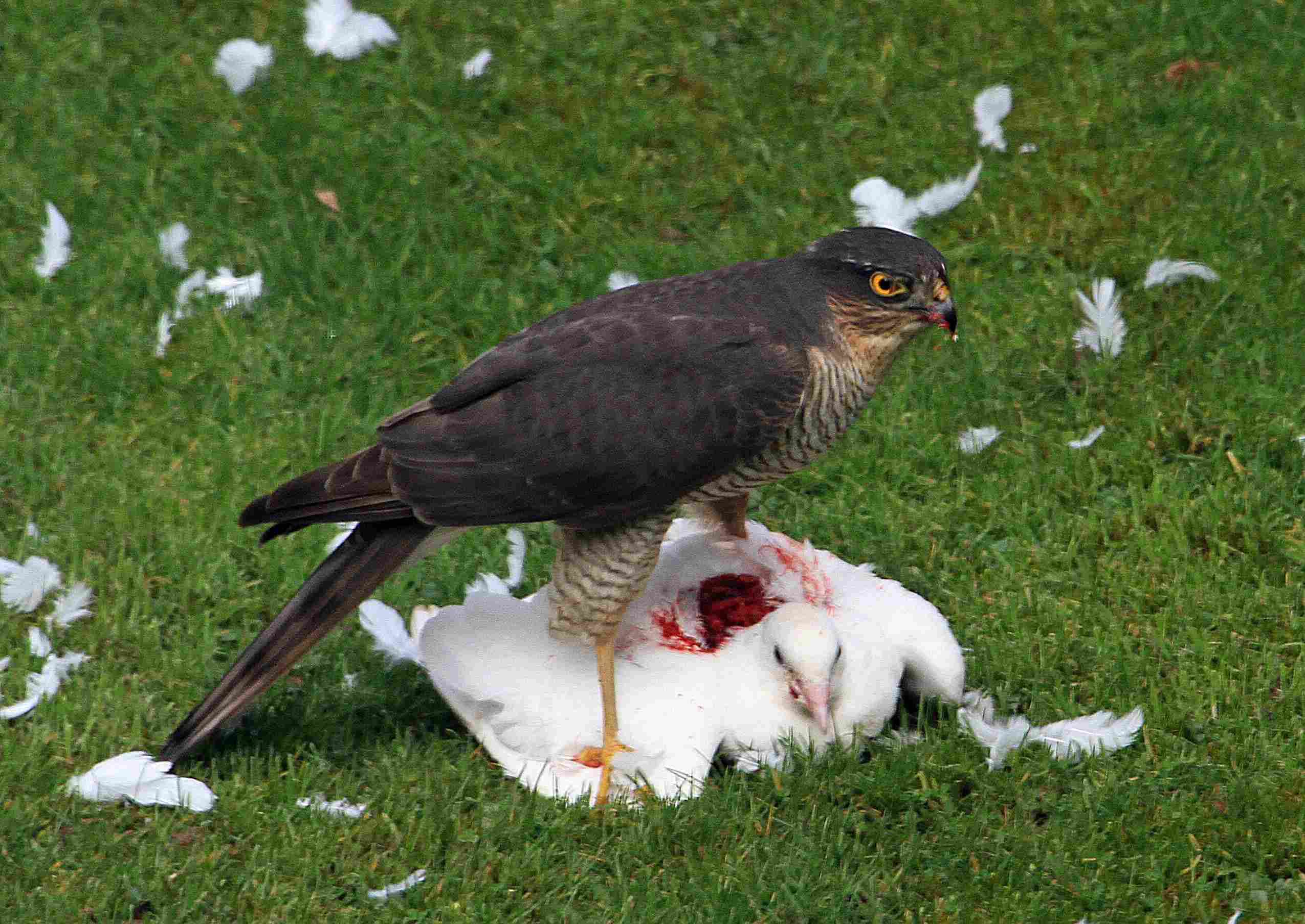
14. What Do Baby Hawks Eat?
Baby hawks, also known as eyasses, have specific dietary needs to support their growth and development. Their diet consists of easily accessible and consumable prey. Baby hawks primarily feed on small rodents, such as mice and voles, which provide them with the necessary nutrients and energy. These small mammals are a crucial source of protein for the growing eyasses.
In addition to rodents, baby hawks also consume other small animals like lizards, fish, and crustaceans. These prey items offer a variety of nutrients and help diversify their diet. Baby hawks may also feed on insects, which are abundant and easy to catch. Insects provide a good source of protein and are readily available in their environment.
It is important to note that the specific diet of baby hawks may vary depending on their location and habitat. The availability of prey species in their surroundings plays a significant role in determining what they eat. Baby hawks rely on their parents to provide them with food until they are old enough to hunt on their own.
15. Do Hawks Eat Grasshoppers?
Hawks do eat grasshoppers, especially baby hawks. Grasshoppers are a common prey item for hawks and provide them with a good source of protein. These insects are abundant in many habitats and are relatively easy for hawks to catch. Grasshoppers are agile and can jump long distances, but hawks have excellent eyesight and are skilled hunters, making them capable of capturing these fast-moving insects.
Baby hawks, in particular, rely on a diverse diet to support their growth and development. Grasshoppers offer a nutritious meal for young hawks, providing them with essential nutrients and energy. As baby hawks continue to grow, they will gradually expand their diet to include other prey items, such as small rodents, birds, and reptiles.
16. What Can I Feed a Hawk in My Yard?
When it comes to feeding hawks in your yard, there are a few options you can consider. One option is to attract small birds by installing bird feeders. Hawks are skilled hunters and will be drawn to areas where there is a concentration of small birds. By providing a food source for these birds, you can indirectly provide a food source for hawks as well.
In addition to small birds, you can also consider other food options like fish. Some hawk species, especially those that live close to water bodies, have a preference for fish. If you have a pond or a nearby stream, you can try offering fish as a supplemental food source for hawks in your yard.
It’s important to note that while providing food for hawks can be a rewarding experience, it’s essential to do so responsibly. Feeding hawks should not replace their natural hunting behaviors, but rather supplement their diet when necessary. It’s also important to ensure that the food you provide is safe and appropriate for hawks to consume.
17. Do Hawks Eat Fish?
Hawks, especially species that live close to water bodies, have a particular affinity for fish. They are skilled hunters and have adapted to catch fish as part of their diet.
When it comes to their feeding habits, hawks are known to dive into the water from a high perch or soar above the surface, scanning for fish below. Once they spot their prey, they use their sharp talons to snatch the fish out of the water. This hunting technique requires precision and agility, showcasing the remarkable abilities of these birds of prey.
In addition to their preference for fish, hawks also consume a variety of other prey, including small mammals, birds, reptiles, and insects. However, their diet may vary depending on the species and the availability of food sources in their habitat.
18. Do Hawks Eat Small Birds?
Yes, hawks do eat small birds such as sparrows and pigeons. These birds of prey have a diverse diet and are known to hunt and consume a variety of avian species. With their sharp talons and keen eyesight, hawks are skilled hunters capable of capturing smaller birds in mid-flight or ambushing them from perches.
Hawks are opportunistic predators, meaning they will take advantage of any available food source. Small birds make up a significant portion of their diet, especially in areas where they are abundant. Hawks use their agility and speed to chase down their prey, relying on their sharp beaks and talons to secure their meal.
It’s important to note that not all hawk species have the same dietary preferences. Some hawks may primarily target small mammals or reptiles, while others may focus more on insects or fish. The specific diet of a hawk depends on its habitat, hunting techniques, and the availability of food sources.
Conclusion
*In this article, we have explored various aspects of hawks and their dietary habits. We have answered questions about whether hawks are carnivores, herbivores, or omnivores, and discussed the classification of hawks as animals. We have also delved into the topic of what hawks eat, including their preferences for small birds, mammals, reptiles, insects, and fish. Additionally, we have touched upon the predators of hawks and their position in the food chain.
*Throughout the sections, we have learned that hawks are indeed carnivores, specializing in hunting and consuming other animals. Their diet varies depending on their habitat and hunting techniques, but small birds are a common prey for many hawk species. Hawks are skilled hunters, using their sharp talons and keen eyesight to capture their prey in mid-flight or from perches.
*It is important to note that not all hawk species have the same dietary preferences. Some may focus more on small mammals or reptiles, while others may primarily target insects or fish. Hawks are opportunistic predators, meaning they will take advantage of any available food source. Their ability to adapt to different environments and food sources contributes to their success as a species.
*Hawks play a crucial role in the ecosystem as top carnivores. They help regulate populations of their prey species, preventing overpopulation and maintaining a balance in the ecosystem. As predators, they are an essential part of the food chain, controlling the populations of smaller animals and contributing to the overall health of the ecosystem.
*Generally, hawks are carnivorous birds of prey that primarily feed on other animals. While their diet may vary depending on the species and habitat, small birds are a common food source for many hawks. They are skilled hunters, using their sharp talons and keen eyesight to capture their prey. Hawks play an important role in the ecosystem as top carnivores, helping to maintain a balance in the food chain and contributing to the overall health of the environment.


